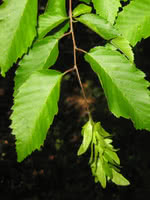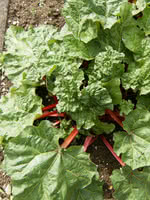Mon-Fri 9am - 5pm Mountain time
Blue Beech vs Canada Red Rhubarb
Carpinus caroliniana
Rheum rhabarbarum Canada Red
NOT AVAILABLE THIS SEASON - MIGHT RETURN
NOT AVAILABLE THIS SEASON - MIGHT RETURN
Blue Beech is a beautiful, ornamental tree with enticing features. The foliage transforms throughout the season, offering a kaleidoscope of color. New leaves emerge reddish-purple, transforming to dark green, and then turn striking shades of yellow, orange, and red in fall. Once all the foliage has dropped, grooved, blue-grey bark becomes striking on a winter landscape.
Blue Beech has an attractive globular shape and has been successfully grown in both full shade and full sun locations. Make sure you provide ample moisture to ensure this tree thrives.
The Canada Red Rhubarb is a perennial vegetable grown primarily for its sweet-tart edible leaf stalks that are commonly used in jams, sauces and pies. This plant develops from a short crown, growing thick stems with large heart-shaped leaves that retain their green color throughout the season. In summer, white flowers appear above the green foliage.
The Canada Red Rhubarb typically grows shorter, more slender stalks that feature a striking red color with a sweeter flavor than other cultivars. For a more reliable crop, it is recommended not to harvest the Canada Red Rhubarb in its first year of growth to allow its root system to establish.
Blue Beech Quick Facts
Canada Red Rhubarb Quick Facts
Toxicity: leaves are highly toxic (oxalic acid)

